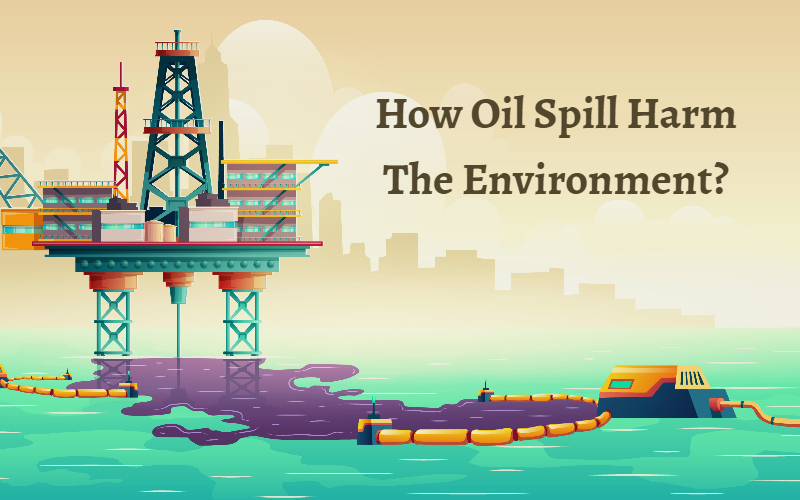You Need To Know About How Oil Spill Harm The Environment
Any spill of heavy petroleum or oil distillation products that can harm the land surface, air, or aquatic environment is considered an oil spill. Pollution from an oil spill can range from one or more gallons of oil spilled to hundreds of millions of gallons of oil spilled. Typically, the word refers to oil spillage in the seas and coastline water.
The Oil Pollution Act
The Oil Pollution Act is an environmental regulation adopted in 1990 in the U.S. to prevent oil spill pollution. The Oil Pollution Act was passed by the U.S. Congress in 1990. It aimed to make oil storage facilities develop “Facility Response Plans” by modifying the present Clean Water Act. The Environmental Protection Agency (EPA) made a number of changes to the Act in 1994. This rule was enacted to prevent oil spillage and to prepare for emergency response. This regulation was meant to prevent and prepare emergency responses to oil spills.
The Oil Spill Pollution Act:
- In order to provide better capabilities for oil spill response and natural resource damage assessment, new regulations were established and the Federal Water Pollution Control Act was revised in the United States.
- The Coast Guard was ordered to tighten its controls on oil tankers.
- Companies must have a cleanup plan in place to prevent any spills from occurring, as well as a detailed containment plan.
- Liability for injuries, cleanup costs, and damages resulting from the release of oil into navigable waters or adjacent shorelines is imposed.
How Does Oil Spill Pollution Affect Us?
These organic compounds can affect wildlife (including fish and birds) and humans in a number of ways:
Directly
- By direct contact with the skin : Some oil components may cause skin irritation when they come into direct contact with it, and they may also enter our bodies through skin absorption.
- Through inhalation : Many individual components of oil are volatile and hence easily evaporate, allowing them to enter our bodies through inhalation. Some less volatile substances (such as PAHs) may adsorb on dust and other microscopic particulate matter floating in the breathing air, allowing them to enter our bodies.
- Ingestion of polluted water and/or particles.
- Through odours emission : How many of us have noticed the strong, unpleasant odour of gasoline or diesel/fuel oil? Crude oil and its many distillates usually have a strong, unpleasant odour.
Indirectly
- By consuming contaminated food : Some oil hydrocarbons, such as PAHs, bioaccumulate in fish and other creatures after consuming polluted food and may concentrate several times more than in water or other media.
- By disrupting professional and/or recreational activities : Due to oil pollution in specific places, it has disrupted professional and/or leisure activity.
- By decreased property values from the affected areas : It is reasonable to expect a reduction in property values in a polluted environment.
- Aesthetically : Through altering the appearance of marine, beach, and other ecosystems (where the oil spill occurred).
- The overall economic impact in the community affected by the oil spill.
How Does an Oil Spill Behave in the Environment?
Depending on where and how an oil spill occurs, it will have distinct environmental effects. For example:
- Water is a great substrate for dispersion, emulsification, and microbial degradation processes, therefore an oil spill in the sea usually degrades quickly. When oil and oil products are released into water, they tend to gather near the surface and float on the water. Small oil droplets may develop, increasing surface contact with water and the natural biodegradation of spilled oil.
- A land-based oil spill could seep underground and eventually reach groundwater. However, if paved surfaces, natural clay layers, or other natural or anthropogenic barriers are present, such vertical migration may be slowed. Oil can also spread laterally through less porous layers (such as surface pavements), as well as through groundwater and surface waterways.
- Because the vertical travelling distance is shortened, an oil spill in the underground (such as from leaking pipelines or underground storage tanks) will most likely damage the groundwater. As a result of the leak, oil residues may become trapped underground, becoming an additional source of groundwater pollution.
More details can be found here:
Here’s some information on How to Clean Spilled Oil with SopUpTM Coco Absorbant and the most recent article on Oil Spill Effects On Marine Life in the Sopup Coco Absorbant.
We hope you found this information to be beneficial!
If this is the case, you should look into Sopup Coco Absorbant Products; they may be truly fascinating.
